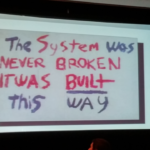In the first part of this blog series, we highlighted three important drivers of consumerism healthcare marketers should know and understand. Now that we know what’s happening, how do we react? Or, more importantly, how do we stay ahead of what’s coming? Healthcare marketers need to take steps now to stay relevant in the mind of consumers who are rapidly changing the way they think about healthcare. Luckily, we have strategies for you to do just that. Embrace New Brand Challenges Historically, hospitals and health systems have been able to succeed on the strength of what we sometimes call a “one-dimensional” brand—meaning, most often, an organization’s clinical prowess or its balance of clinical capabilities and convenience in the community used to be enough. But not any longer. Now, to meet consumers’ increasing demands, provider brands must become “omni-dimensional.” Consider McDonald’s. Their brand isn’t just about “fast.” The McDonald’s brand contains “convenient,” “consistent,” “affordable,” “family-oriented,” “fun” and, increasingly, “health considerate.” Each of these brand dimensions matters more (and less) to different constituents. Similarly, consumerism forces healthcare providers to imagine their brands in more dimensional ways—“accessible,” “transparent,” “affordable,” “responsive to consumer needs,” “high-value,”and “specialized” to name a few. These are new(er) notions to provider brands. Would consumers in your market use these adjectives to describe your organization? Designing these dimensions, presenting them to the right audience at the right time in the right proportions, all while maintaining a consistent overall brand identity and presence, is one of healthcare consumerism’s trickier strategic marketing challenges. Meet the Demands of “Selective Shoppers” In their “New Consumer Imperative,” The Advisory Board uses the “Selective Shopper” moniker to connote “individual stakeholders [who select] discrete care services for distinct episodes of care.” These shoppers are price sensitive, in search of convenience and on-demand access, interested in quality (though imprecisely defined), and critical of service/experience. These Selective Shoppers account for a great deal of a health system’s patient activity. Satisfying the Selective Shopper in the marketplace is particularly difficult for two reasons. First, many of their needs are ones at which providers have historically not been particularly adept. Health systems’ services are often incomplete and uncoordinated, making it hard for the involved consumer to have a positive, satisfying experience. Second, new specialized competitors are designed from the ground up to excel at the unique satisfiers of a particular care need—be it telemedicine, retail urgent care, outpatient radiology, or concierge medicine. These competitors’ products are often inherently more attractive, affordable, and satisfying. Provider marketers now face the challenge of representing the “voice of the customer” in designing their system’s response to these Shoppers and communicating the health system’s unique benefit/value compared to typically less expensive alternatives. Drive Loyalty and Engagement Increasingly, consumerism is prompting healthcare organizations to understand something consumer products companies have known for years: “The best customer to have is the one you’ve already got.” Many of the growth metrics in the value-based healthcare economy represent a deeper level of utilization and connection between the consumer and the health system. Small changes in behaviors for the consumers that you have already captured (e.g. choosing your urgent care center rather than a Walgreen’s or CVS clinic), achieved across the entire patient base of thousands of households, add up to a considerable boost in sales and success in health status management. And, it is these types of choices that reflect a customer’s brand loyalty. Other behaviors are also indicative of brand loyalty. For example, Wylei Research asked consumers to rank the top actions that reflect loyalty based on a fictitious “Company X.” The top three they found were:
- A customer that shops at “Company X” for the quality of the product even though they are more expensive.
- A customer that tells family/friends to go to “Company X.”
- A customer forgives a mistake make by “Company X” and continues shopping there.
Imagine your health system is “Company X.” Consumerism-inspired strategic marketing requires you take fledgling steps to design programs that build loyalty and engagement behaviors like these. Conclusion It practically goes without saying that strategic branding and marketing are greatly affected by the changing healthcare consumer. Adapting your marketing communications planning to include these three action areas will help ensure your organization remains appealing and differentiated from the competition—ultimately leading people to choose you for their healthcare needs.






